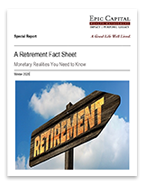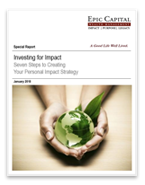72(t) Distributions
Sep 23, 2019
Do you need to access your retirement money early? Maybe you just want to retire before you turn 60 and plan a lifelong income stream from the money you have saved and invested. You may be surprised to know that the Internal Revenue Service allows you a way to do this, provided you do it carefully.
Usually, anyone who takes money out of an IRA or a retirement plan prior to age 59½ faces a 10% early withdrawal penalty on the distribution. That isn’t always the case, however. You may be able to avoid the requisite penalty by taking distributions compliant with Internal Revenue Code Section 72(t), section 2.
While any money you take out of the plan will amount to taxable income, you can position yourself to avoid that extra 10% tax hit by breaking that early IRA or retirement plan distribution down into a series of substantially equal periodic payments (SEPPs). These periodic withdrawals must occur at least once a year, and they must continue for at least 5 full years or until you turn 59½, whichever period is longer. (Optionally, you can make SEPP withdrawals on a monthly basis.)
How do you figure out the SEPPs?
They must be calculated before you can take them, using one of three I.R.S. methods. Some people assume they can just divide the balance of their IRA or 401(k) by five and withdraw that amount per year, but that is not the way to determine them.
It is wise to calculate your potential SEPPs by each of these three methods. When the math is complete, you can schedule your SEPPs in the way that makes the most sense for you.
The Required Minimum Distribution (RMD) method calculates the SEPP amount by dividing your IRA or retirement plan balance at the end of the previous year by the life expectancy factor from the I.R.S. single life expectancy table, joint life and last survivor expectancy table, or uniform life table.
The Fixed Amortization method amortizes your retirement account balance into SEPPs based on your life expectancy. A variation on this, the Fixed Annuitization method, calculates SEPPs using your current age and the mortality table in Appendix B of Rev. Ruling 2002-62.
If you use the Fixed Amortization or Fixed Annuitization method, you are also required to use a reasonable interest rate in calculating the withdrawals. That interest rate can’t exceed more than 120% of the federal midterm rate announced periodically by the I.R.S.
A lot to absorb? It certainly is. The financial professional you know can help you figure all this out, and online calculators also come in handy.
There are some common blunders that can wreck a 72(t) distribution.
You should be aware of them if you want to schedule SEPPs.
If you are taking SEPPs from a qualified workplace retirement plan instead of an IRA, you must generally separate from service (that is, quit working for that employer) before you take them. If you are 51 when you quit and start taking SEPPs from your retirement plan, and you change your mind at 53 and decide you want to keep working, you still have this retirement account that you are obligated to draw down through age 56 – not a good scenario.
Once you start taking SEPPs, you are locked into them for five consecutive years or until you reach age 59½. If you break that commitment or deviate from the SEPP schedule or calculation method you have set, then the I.R.S. applies a 10% early withdrawal penalty to all the SEPPs you have already made, plus interest.
The I.R.S. does permit you to make a one-time change to your distribution method without penalty: if you start with the Fixed AmortizationorFixed Annuitization method, you can opt to switch to the RMD method. You can’t switch out of the RMD method to either the Fixed AmortizationorFixed Annuitization methods, however.
If you want or need to take 72(t) distributions, ask for help. A Charlotte NC based financial advisor can help you plan to do it right.
Tags: financial advisor charlotte nc, Retirement Tax Savings
More Insights
You’re beginning to accumulate substantial wealth, but you worry about protecting it from future potential creditors. Whether your concern is for your personal assets or your business, various tools exist to keep your property safe from tax collectors, accident victims, health-care providers, credit card issuers, business creditors, and creditors of others. To insulate your property … Continue reading “Estate Planning – Protecting Your Assets”
You know how important it is to plan for your retirement, but where do you begin? One of your first steps should be to estimate how much income you’ll need to fund your retirement. That’s not as easy as it sounds, because retirement planning is not an exact science. Your specific needs depend on your … Continue reading “Estimating Your Retirement Income Needs”
As June begins, markets continue to navigate a complex landscape shaped by trade policy shifts, an uncertain economic and earnings outlook, and bond market headwinds. Several key developments in recent weeks may have implications for markets:
April showers came a month early as stocks fell in March. Tariffs were the primary cause of the market jitters, although that uncertainty became too much for markets to shrug off once economic data started to weaken.
A successful investor maximizes gain and minimizes loss. Though there can be no guarantee that any investment strategy will be successful and all investing involves risk, including the possible loss of principal, here are six basic principles that may help you invest more successfully.
Services
Epic Capital provides the following comprehensive financial planning and investment management services: Learn More >


 Top of Page
Top of Page











